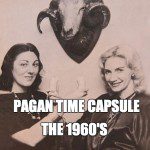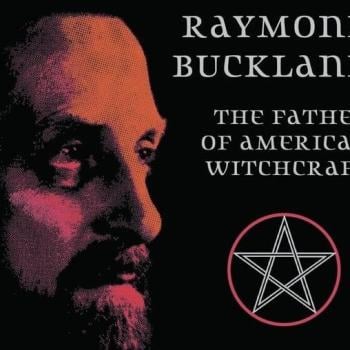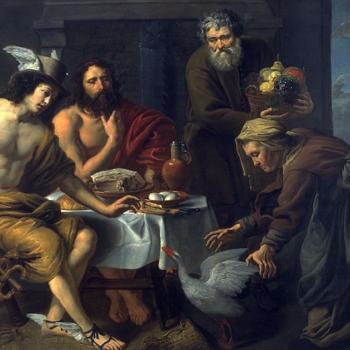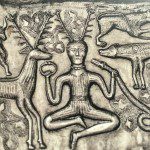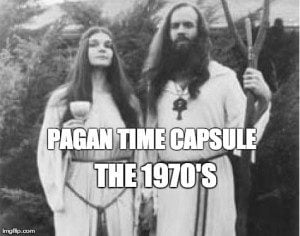 This year marks the 60th Anniversary of Public Paganism. Back in 1954 Gerald Gardner released the first book documenting a living, breathing, and long-lasting Witch tradition. Gifted with an introduction by Dr. Margaret Murray Witchcraft Today launched a now world-wide religious movement. I’m sure that Witches and other Pagans existed and practiced before Gardner, but Gardner made his (and by extension our) presence known in a big way. Modern Paganism would most likely have existed without Gardner but perhaps in a very different and/or diminished form.
This year marks the 60th Anniversary of Public Paganism. Back in 1954 Gerald Gardner released the first book documenting a living, breathing, and long-lasting Witch tradition. Gifted with an introduction by Dr. Margaret Murray Witchcraft Today launched a now world-wide religious movement. I’m sure that Witches and other Pagans existed and practiced before Gardner, but Gardner made his (and by extension our) presence known in a big way. Modern Paganism would most likely have existed without Gardner but perhaps in a very different and/or diminished form.
In celebration of sixty years and seven decades of Public Paganism I’ll be breaking down the essentials of Paganism decade by decade. I’ll take a look a the books, the music, and movies that have driven (and continue to drive) Modern Paganism. The items contained in many of our early Pagan Time Capsules will be a bit Witchcraft-Centric, but that will change as the decades move along. In each time capsule I’ll be placing five to six books, one movie, a few songs, and one bonus item. I want to write that the Seventies were the most important decade in Modern Paganism, but I think that’s overstating things a bit. I do feel comfortable writing that the Seventies set the tone for everything that’s “come next” in Modern Paganism and that its influence has been substantial.
Other editions of Pagan Time Capsule: The Fabulous Fifties, the Swinging Sixties, Shagging Seventies, Ecstatic Eighties, and The Nifty Nineties. The entire series is also summed up here in Pagan History on the Margins.
BOOKS
The early 1970’s marked a dramatic change in Pagan publishing; that’s when rituals became readily available for the first time. Until the publication of Lady Sheba’s Book of Shadows (attributed to Lady Sheba, Jessie Wicker Bell) and Ed Fitch’s Magical Rites From the Crystal Well in 1971 Gardner-inspired-Witch-ritual for the uninitiated was all make it up as you go along. Sheba’s BoS was greatly lacking in context and not quite a complete “101” book but it was a book with rituals. Fitch’s effort (its self a collection of rituals from the 60’s magazine The Crystal Well) has aged better, and was an easier entry point for aspiring Pagans. The 1970’s didn’t result in a deluge of “ritual books” but the handful that were released filled several voids. One of the biggest voids in Pagan Publishing was filled in 1974 with the publication of Raymond Buckland’s The Tree: The Complete Book of Saxon Witchcraft. The Tree wasn’t just an early attempt at a “101” type of book, it was the first book designed for the solitary Witch.
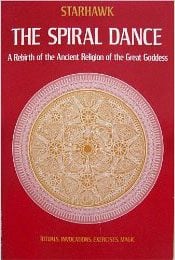 The two most important books of the 1970’s were both released in 1979, and remain two of the most important Pagan books ever published 35 years later. Starhawk’s The Spiral Dance wasn’t just a more Goddess-centered version of Witchcraft it was the synthesis of several currents which has been affecting Paganism (and especially Witchcraft on the West Coast) since the late 60’s. Starhawk infused her version of Witchcraft with politics, feminism, ecology, and just general West Coast liberalism. She did all of that and supplied her Witchcraft with influences from outside of the traditional British sources, most notably Feri practitioners of Victor and Cora Anderson. The Spiral Dance was also the first true 101 book, being the first book to contain just about everything a person or a group needed to begin a meaningful practice of Witchcraft. By 1979 there were several books with rituals in them, but generally those rituals weren’t explained properly, they were in The Spiral Dance. Starhawk’s book was a game-changer, and was a beautiful piece of writing to boot.
The two most important books of the 1970’s were both released in 1979, and remain two of the most important Pagan books ever published 35 years later. Starhawk’s The Spiral Dance wasn’t just a more Goddess-centered version of Witchcraft it was the synthesis of several currents which has been affecting Paganism (and especially Witchcraft on the West Coast) since the late 60’s. Starhawk infused her version of Witchcraft with politics, feminism, ecology, and just general West Coast liberalism. She did all of that and supplied her Witchcraft with influences from outside of the traditional British sources, most notably Feri practitioners of Victor and Cora Anderson. The Spiral Dance was also the first true 101 book, being the first book to contain just about everything a person or a group needed to begin a meaningful practice of Witchcraft. By 1979 there were several books with rituals in them, but generally those rituals weren’t explained properly, they were in The Spiral Dance. Starhawk’s book was a game-changer, and was a beautiful piece of writing to boot.
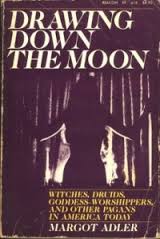 1979 also saw the release of Margot Adler’s Drawing Down the Moon, the first Pagan masterwork. DDtM wasn’t just about Witches, it was about Pagans, and this new, crazy, religious movement that was fast becoming a part of America’s fabric. Sure there were only a few thousand Pagans in the US when Adler’s book was released, but they were everywhere, not just in California and the East Coast and Adler documented nearly all of them. Using her considerable skills as a journalist Adler not only wrote a fascinating look at Paganism in the 1970’s but a history of Paganism up until that point. To this day those of us with a serious jones for Modern Pagan History still use DDtM as a reference book. DDtM was a true turning point, after its release “Pagan books” ended up being just that, Pagan books, not just volumes dedicated exclusively to Modern Witchcraft. I cannot express just how important DDtM and Dance were in words. Without Adler and Starhawk I think Modern Paganism would look drastically different today.
1979 also saw the release of Margot Adler’s Drawing Down the Moon, the first Pagan masterwork. DDtM wasn’t just about Witches, it was about Pagans, and this new, crazy, religious movement that was fast becoming a part of America’s fabric. Sure there were only a few thousand Pagans in the US when Adler’s book was released, but they were everywhere, not just in California and the East Coast and Adler documented nearly all of them. Using her considerable skills as a journalist Adler not only wrote a fascinating look at Paganism in the 1970’s but a history of Paganism up until that point. To this day those of us with a serious jones for Modern Pagan History still use DDtM as a reference book. DDtM was a true turning point, after its release “Pagan books” ended up being just that, Pagan books, not just volumes dedicated exclusively to Modern Witchcraft. I cannot express just how important DDtM and Dance were in words. Without Adler and Starhawk I think Modern Paganism would look drastically different today.
MOVIES
There’s not much debate here as 1973’s The Wicker Man is about the only choice for the decade! The Wicker Man looked Pagan, and often acted like it. Fertility rituals, maypoles, bawdy drinking songs, the celebration of sexuality, the Pagans (or Heathens as they are called in the film) in The Wicker Man were supposed to be the bad guys, but it’s easy to root for them anyways. Had a soundtrack of the movie been released in ’73 the movie might have ended up being even more influential. The tunes are just the right mix of Scottish Countryside (lyrics to Corn Rigs by Robert Burns!) and contemporary folk, and are so essential to the film that it might better be labeled a “musical” than a horror movie. It’s also got Christopher Lee as Lord Summerisle how perfect is that? Remember when jumping through a fire that “It’s much too dangerous to jump through the fire with your clothes on!”
MUSIC
The title makes it sound much cooler than it actually is, but Dave and Toni Arthur’s Hearken to the Witches Rune at least looks like a proper Pagan Witch album (1970). Inspired after working with Alex Sanders the Witches Rune is folk music reimagined for use in a Witch’s circle. The arrangements are simple and the sound on the album has a very “live” feel to it. The songs on the album are the usual collection of British folk music, nothing explicitly Pagan, though many of the tunes were thought to be Pagan in 1970. The album’s sleeve does include a version of Doreen Valiente’s The Witches Rune as adapted by Alex Sanders. Sadly Hearken to wasn’t a success and saw only one initial printing. All these years later I’m still waiting for a re-release. (1)
The hands of Alex Sanders were all over English occultism in the early 1970’s. In addition to working with the Arthurs and releasing his own album of ritual on A&M he and Maxine Sanders collaborated on a live show with the Satanic-rock-and-flute band Black Widow. Black Widow was a musically creative band fusing rock and jazz with a rather occult atmosphere, their 1970 album Sacrifice is a favorite, even with the flute and saxophone solos. (Heavy Metal this is not.) What makes Black Widow so interesting is just how Pagan much of it sounds, at least until the lead singer implores the listener to “come to the sabbat, Satan’s there!” In the Sacrifice live show featuring Maxine Sanders the demon Astaroth is transformed into Astarte, making things far more Pagan.
https://www.youtube.com/watch?v=lEmALYV72scHelp me in my search for knowledge,
I must learn the Secret Art.
Who dares to help me raise the on
Whose very name near stills my heart?
Astaroth!
Discard your clothes and come on foot,
Through streams and fields and moonlit moors,
Your bodies soaked in secret oils,
Perfumed herbs will heal your sores.
Join me in my search for power.Wives and husbands bring your kin.
We´ll be as one within the hour.
Let the Sabbat now begin.
Come, come, come to the Sabbat.
Come to the Sabbat – Satan´s there!. . . Other than the Satan part at the end this mostly sounds like Modern Witchcraft!
The early Seventies saw Paganism getting closer and closer to a Pagan album full of Pagan songs by a Pagan artist and the breakout year was 1975. For that was when Gwydion Pendderwen released Songs From the Old Religion. Gwydion’s album wasn’t a giant hit on the Billboard charts, but that wasn’t the point. The songs on Gwydion’s record became a part of campfires and rituals, and were passed just as much by word of mouth as by vinyl. I heard Gwydion’s version of Lord of the Dance a decade before I heard Gwydion’s actual studio version. Gwydion’s first album was full of more than Pagan song, it was full of possibilities; Pagan music by and for Pagans. The Seventies were about building a community and forging an identity for Paganism and Songs From the Old Religion was an essential part of that.
https://www.youtube.com/watch?v=oBTwhhm9JWEBONUS
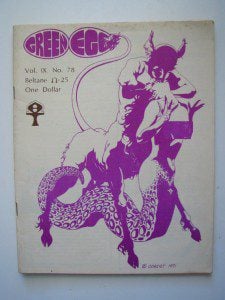 How about issue number 78 of The Green Egg? Pagan magazines first rose to prominence in the 1960’s but rose to a whole other level in the 1970’s. For decades Pagan magazines served as our inter-webs. It’s where we Pagans argued amongst ourselves, shared ideas, and talked shop. Much like the book Drawing Down the Moon Pagan magazines also served as a reminder that Paganism was moving past “just Wicca” on its way to becoming something bigger. Green Egg is the perfect example of this trend. Published by The Church of All Worlds (a group that owes at least some of its ideas to Robert Heinlein’s book Stranger in a Strange Land), The Egg was a magazine from a homegrown American Pagan tradition and yet still served as a useful forum for Witches, Wiccans, Druids, and other Pagans, with the word Pagan coming into its own in the 1970’s.
How about issue number 78 of The Green Egg? Pagan magazines first rose to prominence in the 1960’s but rose to a whole other level in the 1970’s. For decades Pagan magazines served as our inter-webs. It’s where we Pagans argued amongst ourselves, shared ideas, and talked shop. Much like the book Drawing Down the Moon Pagan magazines also served as a reminder that Paganism was moving past “just Wicca” on its way to becoming something bigger. Green Egg is the perfect example of this trend. Published by The Church of All Worlds (a group that owes at least some of its ideas to Robert Heinlein’s book Stranger in a Strange Land), The Egg was a magazine from a homegrown American Pagan tradition and yet still served as a useful forum for Witches, Wiccans, Druids, and other Pagans, with the word Pagan coming into its own in the 1970’s.
As a little bit of added extra bonus how about the Articles of Incorporation for Covenant of the Goddess? (You can see those articles at this link.) Filed on Samhain (of course) back in 1975 CoG was started in an effort to extend legal protection to Witches and Wiccans. It also served as a vehicle for bringing the various traditions of Witchcraft together, which by 1975 were becoming plentiful.
Legal rites, organization, lots of different Pagan traditions, ritual books, 101 books, politics, Pagan music by Pagans for Pagans, and (almost) our very own movie. You can see why I think the 1970’s were so important for our little movement.
Next time: The 1980’s
1. For more about Hearken to the Witches Rune and the Arthurs check out Electric Eden by Rob Young pages 441-446.
Do you like Raise the Horns? Even if you don’t how about humoring a harmless blond-haired guy? Like RtH on Facebook, and also like Patheos Pagan for more great articles most of them far better than this one. Are you a Pagan living in the UK? Jason will be in London and Edinburgh this September and October, send him a message if you’d like to get a cup of tea or a pint of cider.


